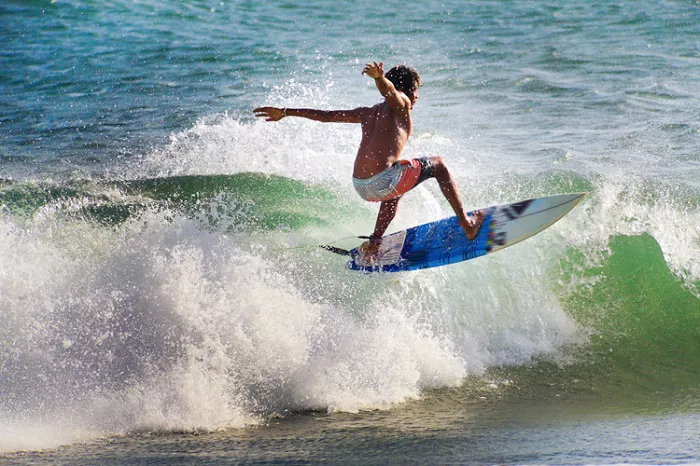Surfing isn’t just about balance and strength, it’s also about understanding the ocean. The difference between a beginner and an experienced surfer is the ability to see waves. Waves are dynamic, ever-changing forces of nature, and interpreting their movements is crucial for positioning, timing, and performing maneuvers. Whether you are a beginner or intermediate surfer and want to improve your surfing skills, learning how to read waves will greatly improve your performance in the water. This guide breaks down the basics of wave reading, from identifying swell patterns to identifying the best take-off point, so let’s take a look.
Understanding the Basics of Wave Formation
Before you can read waves, you must understand how they form. Waves are created by wind energy transferring over the ocean’s surface. The size and power of a wave depend on three key factors:Wind strength – Stronger winds generate larger swells,duration – The longer the wind blows, the more energy builds in the water,fetch – The distance over which the wind travels determines swell consistency.
When these swells reach shallow waters, they begin to break. The shape of the ocean floor (bathymetry) plays a critical role in how waves behave. A steep seafloor causes waves to break quickly, while a gradual slope produces slower, more manageable waves.
Identifying Different Types of Waves
Not all waves are the same. Recognizing different wave types helps you choose the best ones to ride.Beach Breaks:Beach breaks occur over sandy bottoms, making them unpredictable since sandbars shift frequently. These waves can close out (break all at once) or form hollow barrels, depending on sandbar shape.
Point Breaks:Point breaks break along a rocky or coral point, producing long, peeling waves ideal for carving. They are more predictable than beach breaks.Reef Breaks:Reef breaks happen over coral or rock reefs, creating powerful, hollow waves. They are consistent but can be dangerous due to shallow bottoms.Rivermouth Waves:Formed where rivers meet the ocean, these waves benefit from sediment buildup, often creating high-quality breaks.
Analyzing Wave Direction and Swell Angle
The direction from which a swell approaches significantly impacts wave quality.Direct swells (head-on) produce the most powerful waves,oblique swells (angled) create longer, more rideable waves.backwash swells (reflected waves) can interfere with incoming waves, causing choppy conditions.observing swell angle helps you position yourself correctly in the lineup.
Spotting the Peak: Where to Position Yourself
The peak is the highest point of a wave where it first begins to break. Catching a wave at its peak ensures a longer, smoother ride.Look for the steepest section – The part of the wave that rises fastest indicates the peak,watching for “shoulders” – The unbroken sections on either side of the peak offer the best takeoff zones,avoiding closeouts – If a wave looks like it will break all at once, it’s not rideable.
Timing Your Takeoff: Reading Wave Speed and Shape
A well-timed takeoff is essential for a successful ride.Fast, Steep Waves:These require quick pop-ups and strong paddling. Delay even a second, and you’ll miss the drop.Slow, Mushy Waves:These waves need more aggressive paddling since they lack the same push as steep waves.Hollow vs. Crumbling Waves:Hollow waves (barrels) have a steep, concave face and require precise positioning.Crumbling waves (spilling waves) break gradually, making them ideal for beginners.
Reading Wave Sets and Intervals
Waves arrive in sets—groups of larger waves followed by lulls. Set waves are the biggest and best for riding.Wave interval (time between waves) affects paddling out. Longer intervals (10+ seconds) mean more powerful waves.Counting waves in a set helps you anticipate when the best ones will come.
Using Ocean Currents and Tides to Your Advantage
Rip Currents: Rip currents can help you paddle out faster but must be used cautiously.
Tidal Influence: High tide – Waves break closer to shore, often softer.Low tide – Waves break farther out, often hollower and faster.
Observing Other Surfers for Clues
Experienced surfers often position themselves where the best waves break. Watching their movements can help you identify optimal takeoff spots.
Practicing Wave Reading from Shore
Before entering the water, spend time observing: Where waves consistently break.How they peel left or right. How other surfers position themselves.
Conclusion
Mastering wave reading takes time, but with consistent practice, you’ll develop an intuitive sense of the ocean’s rhythms. The more you observe and analyze waves, the better your surfing will become.Every session is a lesson. Even on flat days, watching how water moves around rocks, how rips pull along the shoreline, or how tides alter the break zone deepens your understanding. The ocean rewards those who study its rhythms. Pay attention to swell direction, wave shape, and break patterns, and soon, you’ll be catching the best waves with confidence. Remember, the ocean is a dynamic teacher—every session is an opportunity to refine your skills and deepen your understanding of the waves.

